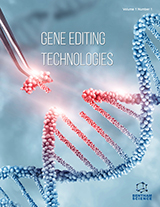Abstract
Fertilization is a stepwise process that starts before the actual gamete binding and fusion. Spermatozoa travel through the female reproductive system and respond to chemotaxis and thermotaxis to reach the oocyte. In most mammals, zona pellucida (ZP) glycoprotein ZPC is the primary sperm receptor that mediates sperm-ZP binding and acrosomal exocytosis (AE). During AE, the outer acrosomal membrane, already primed for AE during capacitation, fuses with the plasma membrane and undergoes vesiculation. The acrosomal matrix (AM) is exposed and dispersed in a step-wise manner. Sperm-ZP penetration is supported by sperm motility and by enzymatic activity of the hypothetical egg coat “lysin”, an acrosomal protease that digests the fertilization slit. Acrosin has been considered as a zona lysin candidate. However, male mice lacking the Acr gene are fertile. Recently, researchers have been focusing on the 26S proteasome as a mammalian and non-mammalian egg coat lysin. Following zona penetration, spermatozoa reach the perivitelline space and adhere to and fuse with the oolemma. Tetraspanin superfamily members CD9 and CD81 appear to act as sperm receptors on the oolemma, possibly supported by integrins and other elements within the cortical tetraspanin web. IZUMO, a member of immunoglobulin superfamily is a sperm ligand candidate for oolemma tetraspanins. Both CD9 and IZUMO are essential for gamete adhesion and fertility in the mouse. However, there is no evidence yet supporting the involvement of IZUMO and CD9 in sperm-egg plasma membrane fusion. After sperm-oolemma fusion, the fertilizing spermatozoon is incorporated into the ooplasm, a process aided by oocyte cortex microfilaments.






















